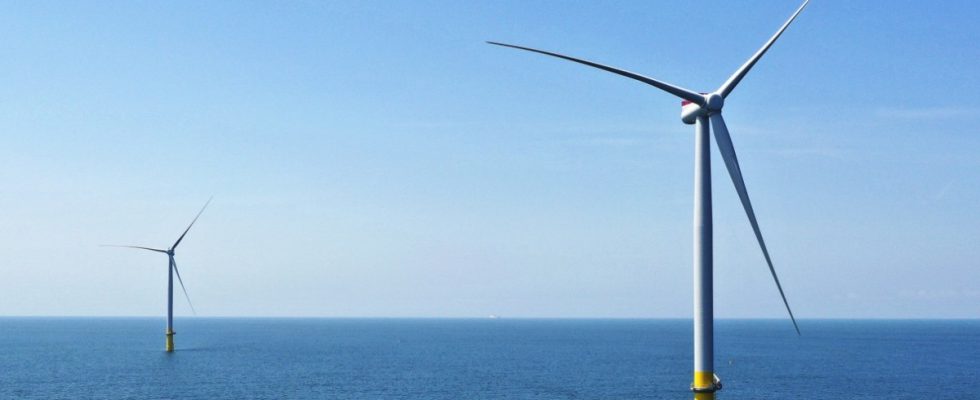The Siemens Energy boss speaks for more than ten minutes before he gets to the actual topic that everyone is waiting for this Wednesday. Such minutes can be quite long. Christian Bruch first praises his 90,000 employees, the work of the major business areas, the successes in the power plant division and in power grids. He highlights the billion-dollar sales and billion-dollar incoming orders; overall, the group has orders worth 110 billion euros in the pipeline.
Bruch speaks of a “success story”, which is already an announcement for the boss of an energy technology company, who then only a short time later has to explain how the company needs to be helped with billions in guarantees so that it can continue. So it’s not all that unproblematic.
It was then 8:45 a.m. when Bruch said: “The difficulties with the wind overshadow the excellent results in the other areas.” It is “Siemens Energy’s other businesses that ensure the survival of Siemens Gamesa.” And, not to be forgotten at this point, there are guarantees amounting to 15 billion euros in which the federal government is making a significant contribution. Because of all things, the wind power division Siemens Gamesa, which is actually considered the future business in the energy transition, has been burning billions for years.
The numbers speak for themselves. In the past 2022/23 financial year, Siemens Gamesa pushed the group even deeper into the red: 4.6 billion euros. Reason: long-standing, serious quality deficiencies in wind turbines on land (onshore) and start-up difficulties in wind turbines on the open sea (offshore).
The federal government, banks, Siemens – everyone has to get involved
In order for Siemens Energy to be able to pursue its other business with large energy infrastructure projects, it needs these guarantees worth billions – and they are now a done deal. On Tuesday, after weeks of negotiations, the federal government made the aid official. The federal government then steps in to rescue the company with a guarantee of 7.5 billion euros. Not directly, but: Berlin is using a federal guarantee to partially secure guarantee aid from the banks amounting to twelve billion euros. A not uncontroversial solution, which has been criticized not least by the head of the Ifo Institute, Clemens Fuest. On the other hand: The aid is intended to prevent one of the last major local providers of technology related to the energy transition from going under. Siemens Energy is not only active in the construction of onshore and offshore wind farms, but also around power grids and gas turbines, which will increasingly run on hydrogen in the future.
Just last week, the company inaugurated a “Gigafactory” in Berlin in the presence of Chancellor Olaf Scholz and Federal Economics Minister Robert Habeck (Greens). In the future, it will produce large-scale electrolysers that can produce green hydrogen from renewable electricity. From the perspective of the traffic light coalition, Siemens Energy also has strategic importance for the country’s electricity supply.
However, the federal government does not want to be the only one responsible for the company’s problems. The former parent company Siemens, which still holds 25.1 percent of the energy technology company, also has to get involved. Siemens Energy is selling 18 percent of its shares in the joint national company in India to the major shareholder in order to earn 2.1 billion euros. And: After the federal government’s billion-dollar guarantee, Spain is now also talking to banks about help for the wind power subsidiary Siemens Gamesa, which has its headquarters there. Theoretically, even federal states could step in. But it shouldn’t come to that. In any case, management probably has every reason to leave the state guarantee behind as quickly as possible. It is not particularly cheap, and this help is not unconditional: Siemens Energy is neither allowed to pay dividends nor can the board receive bonuses as long as the state aid continues.
Two more years down
“Thankfully,” says Bruch, the banks, the federal government and Siemens helped. The debates of the past few weeks, the severe slumps on the stock market – all of this has left its mark, including on the boss. “If the wind sector had been fully successful, we wouldn’t have needed this discussion,” he says. And that “none of us” wants to “overuse” this “instrument.” He emphasizes: This is about a “guarantee that is extremely valuable.” Guarantee, not aid. That’s important to him.
Next week, Bruch wants to explain what he wants to do about the guarantees. So answer the question: What should happen next in the wind power business?
On Wednesday he gave a small outlook on how the numbers will continue: at least in the next two years, the wind power business is expected to continue to make losses. So two years without good news, profits are not expected to be made until the 2025/26 financial year. In order to achieve this, “the scope of Siemens Gamesa’s business activities is currently being reviewed,” said the company. So company shares are to be sold. Which? And when?
The Siemens Energy boss is currently ruling out at least one thing: a withdrawal from the onshore wind turbine business. “We can’t say we won’t do that anymore,” he said, so a “bang effect” is not expected in the coming week when there are new details about the future. “It has to be our job to fix this first.”
Fix it first. In order to have the time to do this, the group is now receiving government guarantees. This will give the group some breathing room. But in the end the company will probably have to solve its problems itself. And Berlin will be watching closely.

